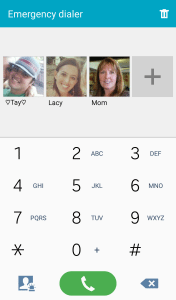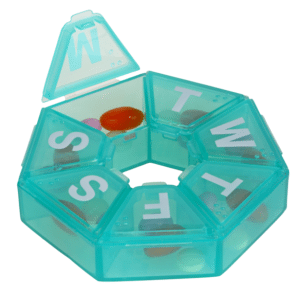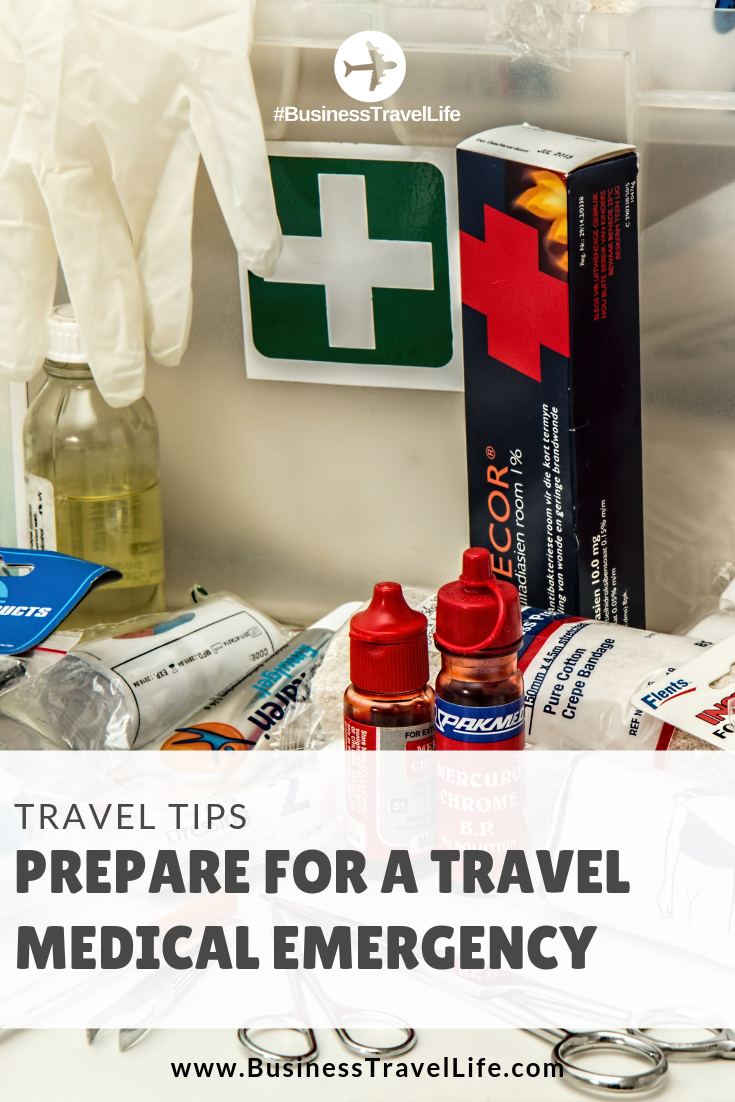Recently a close friend was experiencing intense side pain that required an unplanned visit to an urgent care. The physician at the urgent care determined the pain was coming from her gall bladder, and the next thing she knew she was in a hospital getting ready for surgery. Did I forget to mention she was 1,000 miles away from home on a business trip when this happened?
This experience left me feeling unprepared. Just like any other traveler, I have experienced my share of colds, flu, migraines and food poisoning, but nothing that landed me in urgent care or in the emergency room. A trip to the hospital during travel was not even on my radar until this happened.
Similar to preparing for other emergency situations, planning is the key to preparing for a medical emergency during travel. Here are the factors you need to consider.
Emergency Contact

Every smart phone has the “in case of emergency” (ICE) contact list. This is a list of contacts you select that can be accessed without unlocking your phone. If you are involved in an accident, or taken ill, the ICE contact could provide critical information for paramedics.
Your ICE contact should know:
- Pertinent medical history and allergies.
- How to access a current list of your other medical information such as primary care physician, specialists, and medications.
- How to contact your immediate family and employer.
Choose your emergency contact strategically. It does not have to be a family member but it should be someone who is aware of health concerns or any on-going medical issues. Here are a few tips for setting up the ICE list in your phone:
- Have more than one ICE contact in case one is unavailable or one is traveling with you.
- Do not use choose two ICE contacts that could be traveling with you at the same time (i.e.: spouse and child).
- Include every method of communication you have for each ICE contact (cell phone, work phone, home phone, and email).
Medication and Allergies
Many prescription drugs like warfarin have side effects that could land you in the hospital when mixed with certain foods, supplements, or antibiotics. To avoid making a medical situation worse, it is critical to know the types of medication you are taking. In addition to medication, you need to remember vitamins, nutritional supplements, and herbal products. Lastly, if you have any reactions or allergies to certain medication or something like latex, make a note on your medication list.

If you are traveling, more than likely you will not have the full size medication bottles with you. Here are three ways to document your medications and allergies:
- Create a gallery in your phone and take a photo of each bottle to show the label including dosage and ingredients (if it has other ingredients).
- Create a contact in your phone called “medications” and list each medication and dosage in the notes section of the contact. Include this contact as an ICE*.
- Hand write a list of your medications with dosage information and place it in your wallet.
It is not necessary to expect your ICE contact to have this information memorized, but it is important that your ICE contact knows exactly where to find it. Make sure you share the location or provide them with a copy.
Insurance
Even with the best intentions, it is not a guarantee you will have your insurance card if you have a medical emergency during travel. I took mine out one time to provide my insurance information over the phone before an appointment, it got lost in the shuffle, and I found it at the end of the year when I was scanning receipts. Take a photo of your insurance card and make sure at least one of your ICE contacts has a copy of it. Alternatively, you could create a contact in your phone called ICE-Insurance and enter basic information into your phone.
Travel and Meetings Schedule
Your ICE contact needs to be aware of your travel and meeting schedule. This is especially important if you do not have an assistant or you are a solopreneur.
If you are in the hospital, your client needs to know as soon as possible that you are not coming due to an emergency, and that you will reschedule when you are feeling better. If you are dealing with an emergency, you are not going to be able to make these calls, but someone will need to. Your health is your main priority, but you certainly do not want to have a “no call, no show” with someone who is a potential customer or who may have already paid you to be there.
- Make sure someone has access to, or knows how to gain access to, your calendar.
- Enter specific information on your calendar for appointments including meeting location, contact name, and phone number.
- Enter your travel itinerary onto your calendar including confirmation numbers. Services like TripIt make this really easy.
After the important issues are hashed out, make sure your ICE contact or assistant calls your airline and cancels or reschedules your return flight. Do not expect the airline to refund your ticket if you are hospitalized, there are no laws requiring them to do so. If you have a priority status, your airline may decide to waive your rebooking fee, but unless you are flying on Southwest you will likely have to pay a rebooking fee.
Start Planning
While we all hope to never actually need to use an emergency medical plan during a business trip, it is a good idea to have all the information in an easy to access location. I designed a simple checklist for you to use to create your emergency medical plan along with a one page document to print. I followed the checklist and it took 20 minutes of my Sunday afternoon to complete. I will gladly trade 20 minutes of my Sunday afternoon now to prevent wasting precious time during an emergency medical situation trying to locate this important information.
*When using the ICE function on your phone you may be required to use a number in order for the contact to appear on your lock screen. You do not need an actual phone number, a single number will do.
Business Travel Life
Business Travel Life is an online resource supporting the road warrior lifestyle. We give business travelers the tools they need to maintain their wellness and productivity when traveling. The topics we cover include business travel tips, travel workouts, healthy travel hacks, travel products, general travel tips, and industry trends. Our goal is to make business travel a healthier experience – and to make healthy travel practices more accessible to all road warriors.

